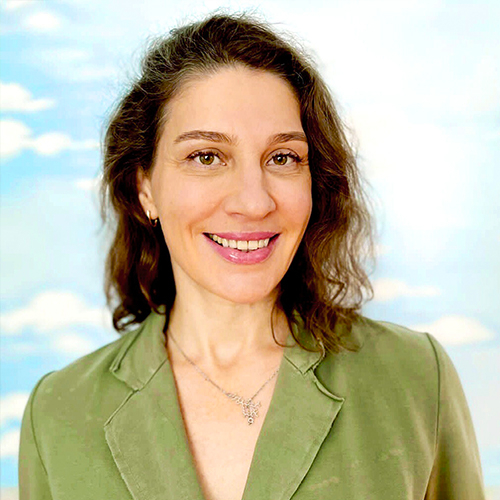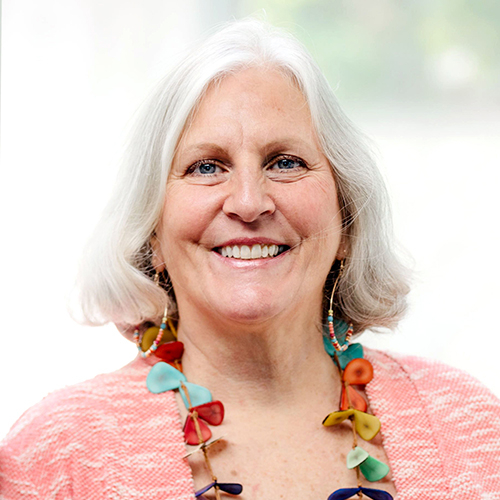
GOLD Learning Day: Pain Assessment & Management During Lactation
Pain is one of the most common reasons for early weaning, meaning it's crucial for care providers to be up to date on how to assess and manage breast/chestfeeding related pain. This GOLD Learning Day event brings together some of the latest research and techniques for managing pain with 3 Expert Speakers! Learn more about structural causes of deep breast pain and milk stasis, the latest research on candida and biomechanical techniques for preventing and treating engorgement. These presentations go beyond the basics and take a deeper look at how structural issues can contribute to pain, how to make a differential diagnosis and the involvement of muscles and how posture and movement can impact pain and infant feeding.
Free to GOLD Learning Participants with Alumni Status - Do you have Alumni status? As a special thank you to our past participants that have attended 5 or more Live GOLD Conferences, you are invited to attend with a complimentary registration. Add this package to your cart and follow the check out process. When prompted, login with your GOLD Learning associated email address and on the final step, the discount will be automatically applied. A separate invitation email will also be sent to our Alumni Status Participants. Not sure if you're elgible, check your Alumni Status here.
GOLD Annual Members: Please note that GOLD Annual Membership is not the same thing as having Alumni Status. Become a GOLD Annual Member to enjoy a 10% discount from your registration fee!


Tatiana was born in Moscow, Russia and graduated from Lomonosov Moscow State University in 1991 with a Master’s degree in Art.
Since 2007 Tatiana has her own lactation consultant in private practice. She first became an IBCLC in 2011. From 2012-2019 Tatiana served as the IBLCE Country coordinator for Russia and from 2012-2021 as the Project coordinator for a “New degree” for educational courses in LC.
Objective 1. Describe the involvement of muscles during breastfeeding and how they are impacted by body position.
Objective 2. Explain the importance of helping parents concentrate on their own sensations of postures and movements during breastfeeding.
Objective 3. Explain how the “3 D Inertial hand expression” method can be applied in a lactation consultant's practice to help with engorgement.
Objective 4. Describe how to assist parents to express milk with minimal effort and maximum efficiency.
Breastfeeding biomechanics is a field that combines physics with knowledge from biological and medical sciences, psychology and cultural studies. A better understanding of the nursing mechanics will help us to recognize which cultural concepts of feeding posture may be associated with ergonomic risk factors for the parent's body. Breast engorgement and nipple pain should not be taken as an inevitable part of the early postpartum period. With the help of the «Mindful latching» method (techniques for concentrating parents on their own sensations of postures and movements) we can control the ergonomic risks of repetitive movements. If we still have to deal with engorgement, «3D Inertial hand expression» method (the synthesis of traditional practices and modern knowledge of breast biomechanics) could be helpful. Breast biomechanics focus on how forces act on the breast structures and fluids and how the breast tissues respond to these forces.


Following this presentation participants will be able to-
Objective 1. State the symptoms of candidiasis in the breastfeeding woman.
Objective 2. List the differential diagnosis for nipple and breast pain in breastfeeding women.
Objective 3. Describe the treatment of a woman and baby following a positive diagnosis of candida.
Background: There are many factors associated with nipple and breast pain in breastfeeding women. The aetiology and management of mammary candidiasis can add additional challenges for the clinician as they endeavour to provide expert care to the breastfeeding dyad.
Review: The literature was reviewed to explore the diagnosis and management of candida in the breastfeeding dyad.
Findings: There remains a lack of robust evidence in the literature to support accurate diagnosis of candida. Correct treatment and avoidance of over treatment is important.
Conclusion: An exploration of the differential diagnosis for nipple and breast pain is indicated for all women presenting with nipple and breast pain. Culture of breastmilk is important for women suspected of mammary candidiasis, however, analysis is not without challenges.


Dr. Hazelbaker has been a therapist in private practice for over 30 years. She specializes in cross-disciplinary treatment and to that end has taken training in several modalities to best assist her clients. She is a certified Craniosacral Therapist, a Lymph Drainage Therapy practitioner, a Tummy Time™ Trainer, a Haller Method practitioner, A Pre and Perinatal Psychology Educator, a Lactation Therapist Diplomate, an International Board Certified Lactation Consultant and a fellow of the International Lactation Consultant Association.
She earned her Master’s Degree from Pacific Oaks College (Human Development specializing in Human Lactation) and her doctorate from The Union Institute and University (Psychology, specializing in Energetic and Transformational healing.)
People recognize her as an expert on infant sucking issues caused by various structural problems like torticollis, plagiocephaly, brachycephaly and tissue shock-trauma. She invented the Hazelbaker™ FingerFeeder and the Infant Breastfeeding CranioSacral Protocol™ to assist in the resolution of this type of infant sucking dysfunction.
Topic: Cranial Nerves: A Critical Component of the Process of Breastfeeding - [View Abstract]
Topic: Creating Flow: Using Lymphatic Drainage Therapy for Breastfeeding Issues - [View Abstract]
Topic: Finger Feeding: What Do We Know? What Should We Know? - [View Abstract]
Topic: Gamechangers: New studies that will change the way we think about tongue-tie - [View Abstract]
Topic: Infant Trauma: Impact on Breastfeeding - [View Abstract]
Topic: The Faux Tie: When is a "Tongue-tie" NOT a Tongue-tie? - [View Abstract]
Topic: The Impact of Bodywork on Infant Breastfeeding - [View Abstract]
Topic: What Does Torticollis Have to do with Breastfeeding? - [View Abstract]
Objective 1. Define subluxation and myofascial trigger points.
Objective 2. Describe signs and symptoms of both in the breastfeeding parent.
Objective 3. List treatment approaches for both conditions.
Deep breast pain and milk stasis are often blamed on back pressure on milk ducts, incomplete emptying and fungal infection. Although these issues can be attributed to backpressure in the case of milk stasis, or "not likely to be related to" in the case of fungal infection inside the breast, the forgotten role that structural integrity plays in breast health can explain those problems that develop and persist despite proper milk removal and general health care of the breast. This presentation covers the anatomy and physiology of rib and vertebral subluxation and myofascial trigger points in generating deep breast pain and milk stasis. Several case reports illustrate the concept; proper care for resolution of these issues is covered.
Accreditation
CERPs - Continuing Education Recognition Points
GOLD Conferences has been designated as a Long Term Provider of CERPs by the IBLCE--Approval #CLT114-07. This program is approved for 3 L-CERPs.
Additional Details:
Viewing time: 6 Weeks
Tags / Categories
How much time do I have to view the presentations?
- The viewing time will be specified for each product. When you purchase multiple items in your cart, the viewing time becomes CUMULATIVE. Ex. Lecture 1= 2 weeks and Lecture Pack 2 = 4 Weeks, you will have a total of 6 weeks viewing time for ALL the presentations made in that purchase.
- Time for viewing the talks begins once you purchase the product. For Live Webinars & Symposiums, the viewing period begins from when the live event takes place. Presentations can be accessed 24/7 and can be viewed as many times as you like during the viewing period.
What are bundled lectures?
- Presentations may be available individually or via a bundled package. Bundled lectures are a set of lectures that have been put together based on a specific category or topic. Some lectures will be available in both individual and lecture form, whereas others will be available only via a bundled lecture pack.
Will there be Handouts?
- YES! Each lecture comes with a PDF handout provided by the Speaker.
Some lectures include a Q&A, what does that mean?
- During our online conferences, presentations that occur live are also followed by a short 15 minute Question & Answer Session. The Speaker addresses questions that were posted by Delegates during the presentation. We include the recording of these Q&A Sessions as a bonus for you.
How can I receive a Certificate?
- If this presentation offers a certificate, once you are done viewing the lecture or the lectures within a bundle, submit your attendance record in order to be able to download your certificate. You'll be able to see which credits are offered for the lecture by hovering over the "Credits Available" link within the "Speakers & Topics" tab.
Professionals that selected this package also viewed

|
|

|









